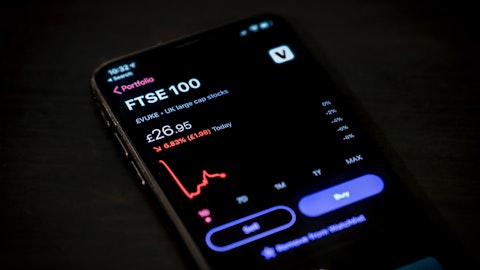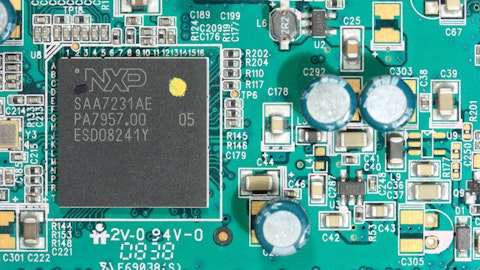Gayn Erickson: Chris and I were just going through that this morning again. Right now, we’re right at 3% or 4%. We certainly believe 3%. And there’s like I think there was like 4% or 5% that are all in the 3% to 6% that anyone might be able to poke their head up or something. So I mean, from a diversity, we’re all excited because of how many customers, but let’s not kid ourselves. We don’t have hundreds of customers and never will in this space, but we’ll definitely have a much more diverse number of customers, which is nice. But we’ll stick to the 3% to 4%. It’s not clear how we would get to 5% necessarily. We don’t call out the 5% customers, but we might have a good chunk of those, too.
Christian Schwab: Great. I don’t have any other questions at this time. Thanks Gayn.
Gayn Erickson: Okay. Thanks Christian.
Chris Siu: Thank you.
Operator: The next question is from Jed Dorsheimer with William Blair. Please go ahead.
Jed Dorsheimer: Hi, thanks. Hi, Gayn and Chris. I guess, first question, I just wanted to dig in, Christian touched on it but just on the WaferPak aligners the standalone that were recognized in the quarter versus, and congratulations on getting the fully integrated systems signed off. Should I look at that is taking your effective backlog and subtracting the bookings so that the quarter would have been $6 million greater had those signed off in the quarter. Is that the right way to look at that? Or how would you suggest that?
Gayn Erickson: Yes. I mean as we got a little closer, we kind of anticipated that we didn’t really specific. We weren’t even sure that the second one was going to book, I won’t get into all this, I wouldn’t have scored for revenue. So I guess, theoretically, we could have pulled in one and the other one was already in our plans, whether we told you or not in our second quarter. I mean, between the two of them, I think it’s closer to $8 million or so.
Jed Dorsheimer: Got it. So to be clear, you sold these integrated systems, of those two systems at the same customer, which I think Chris mentioned is a U.S. customer, that the aligners were recognized in the August quarter, but the rest of the two systems went into September. I just want to make sure I have that correct.
Gayn Erickson: No. And I’m not sure everyone else is going to be able to follow along with it. The way our revenue recognition works, which is very consistent with the industry and we’re always very open, is that when we have a brand new product that has never been accepted or released into production with a customer before. We will not score revenue on it or anyone like it until candidly, the first one is accepted, and I won’t get into a perfunctory and all that. But it turns out the first customer shipments were what we call stand-alone aligner and it went to our lead customer who has been accepting XPs all along. So the only thing deferred, if you will, was the revenue for those two aligners. So when they accept it, they were just the two aligners.
The weird thing is, on the second lead customer, second large customer that had the systems, the XP and the aligner were bolted together. And the XP also had those new enhancements. So Ken, our previous CFO, and Chris was on board as well, we drew a circle around those and said, the whole thing isn’t accepted until it’s all accepted, which is a little weird, but basically, once the aligner was accepted, then the XP and the aligner it was all accepted at the same time. And in that case, both of them triggered, and they’re both released and working now.
Chris Siu: Yes. So to add to that, so that means going forward, whether they’re manual auto aligners or integrated aligners we don’t need to wait for – or whether they have the new options or anything, it just ships and we score, revenue when we ship going forward.




